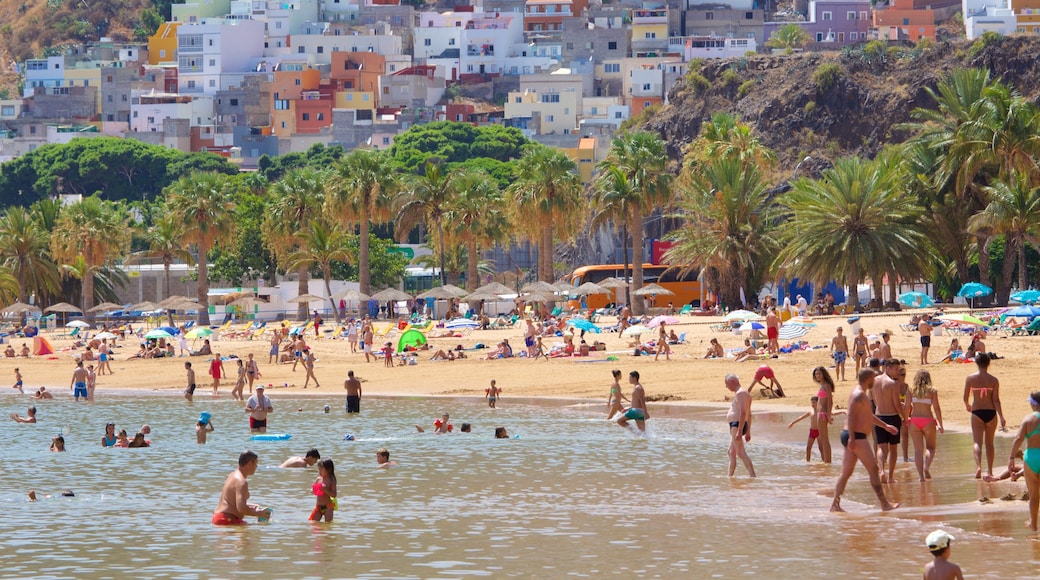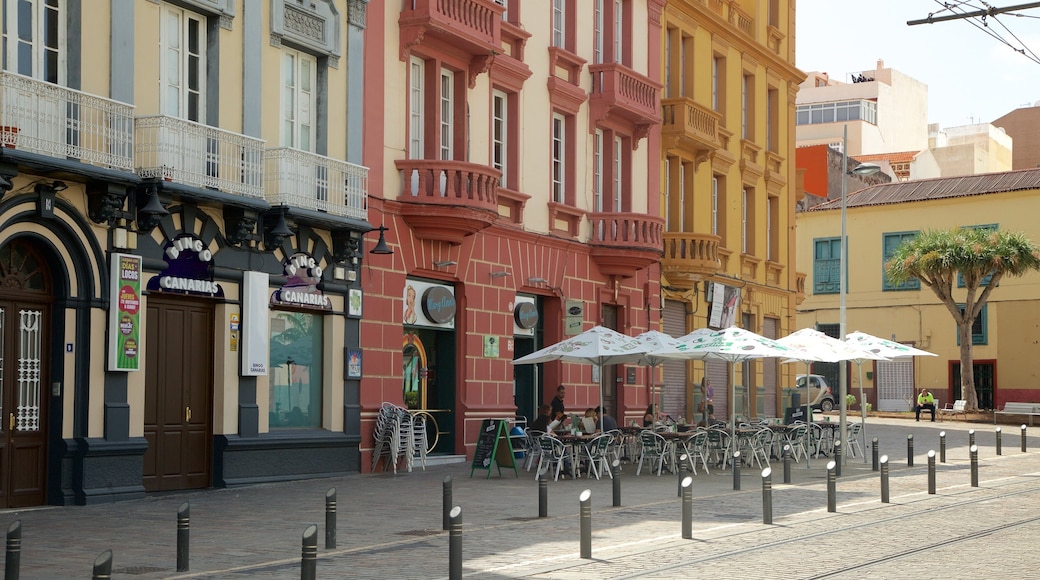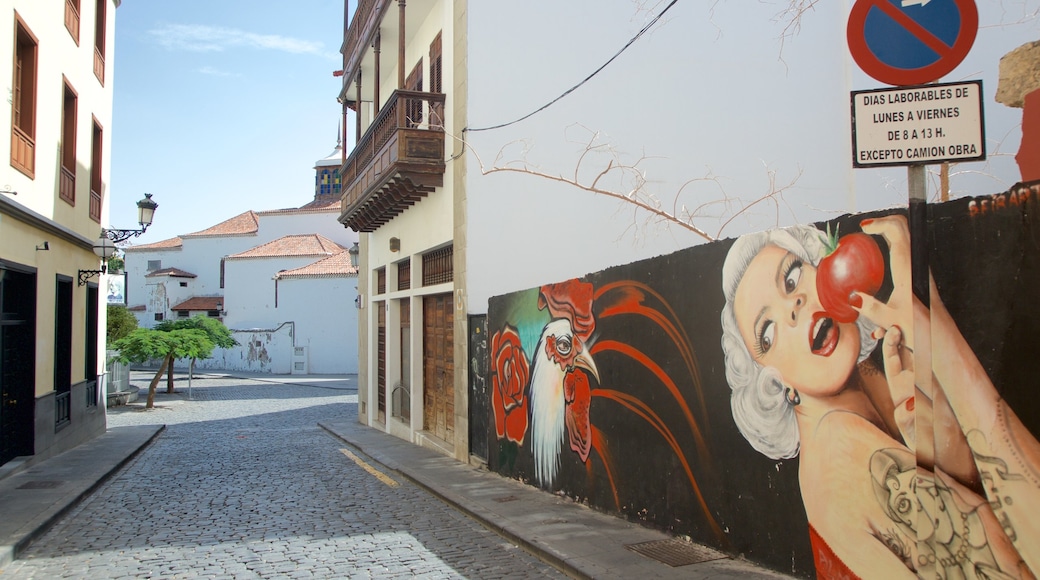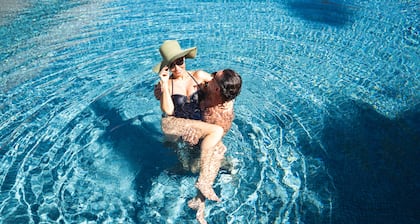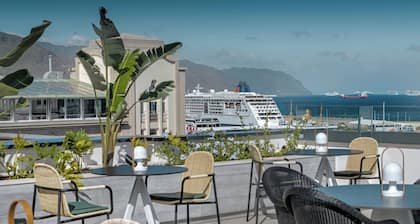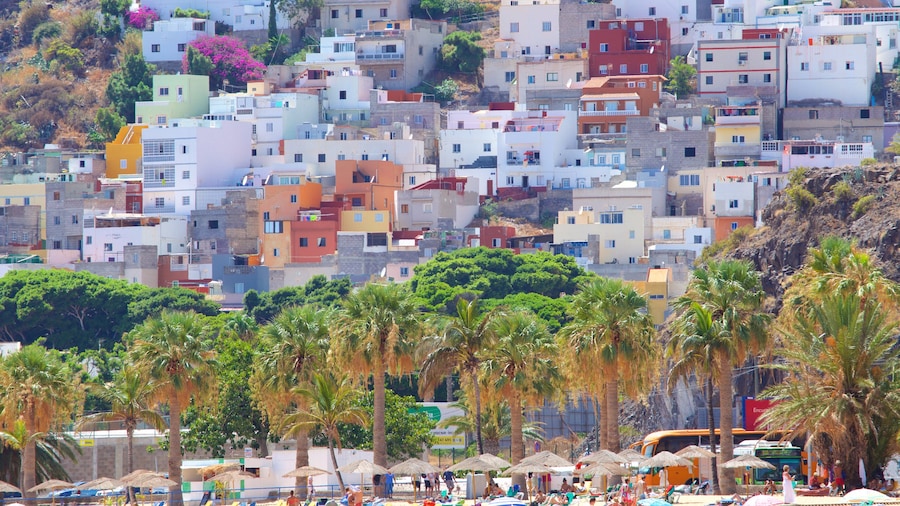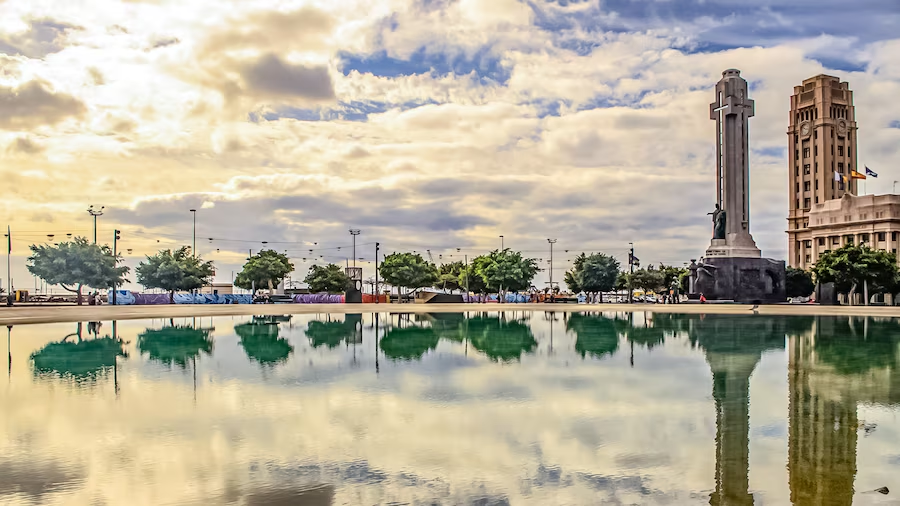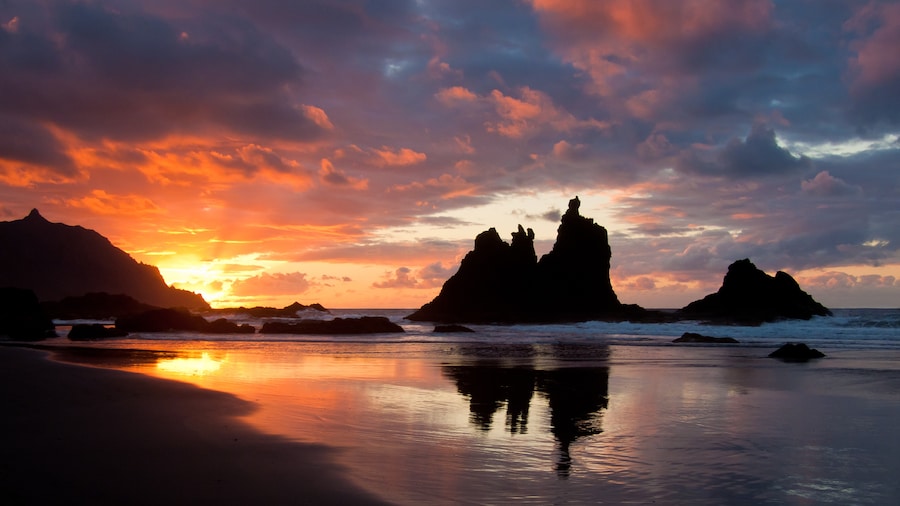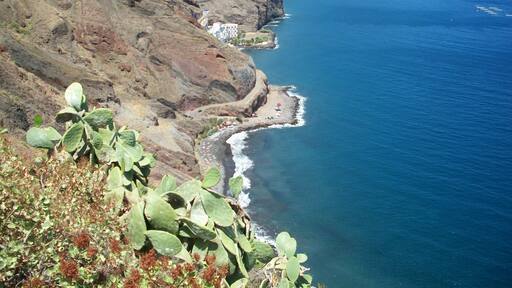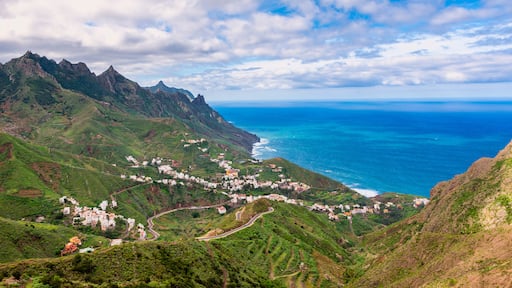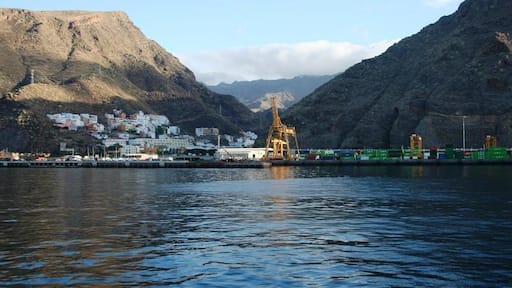Santa Cruz de Tenerife is the island’s capital, a bustling web of colourful buildings, cosmopolitan shops and well-landscaped squares. Enjoy its distinctly Spanish heritage in contrast to the more tourist-oriented destinations farther south.
The town was once one of the Atlantic’s most important ports. Santa Cruz de Tenerife flourished during the 19th century as a popular stop for ships en route to the Americas. It became the island’s capital in 1837. See the elegant old buildings that wealthy citizens constructed in these early days.
Begin your exploration in lively Plaza de España, the city’s main square. Redesigned in 2008, this unique square is dominated by an enormous shallow basin that serves as a wading pool and a towering memorial to the Spanish Civil War. In the San Cristóbal museum found under the square, see the notorious 18th-century cannon said to be responsible for blowing off Admiral Nelson’s arm.
Don’t miss the gorgeous Mudéjar-style ceiling of Iglesia de Nuestra Señora de la Concepción, the city’s oldest church. Look for Santa Cruz de la Conquista (Holy Cross of the Conquest), a wooden cross said to have been used in the celebrations of the Spanish 15th-century victory over the aboriginal Guanches.
Save time for the Museo de la Naturaleza y el Hombre, one of the finest museums in the Canary Islands. Dedicated to natural science and archeology, the museum features numerous interesting interactive displays. Learn how the volcanic Canary Islands were formed and see the haunting mummified bodies of the region’s first inhabitants.
Venture outside the city centre to visit gorgeous Teresitas Beach. Swim in its calm waters, stroll along golden sands brought from the Sahara and admire views of the Anaga Mountains.
Sample some of the city’s famous cuisine. Dine al fresco on traditional dishes like rancho canario, a hearty soup made with chickpeas, potatoes, carrots, cabbage and thick noodles, or local fish like sardines, jack mackerel or grouper.
Santa Cruz de Tenerife is located on the northeastern tip of Tenerife. It’s well connected to the rest of the island by bus and ferry.
